Germany at War: Barbarossa 1941 – PC Game Review
Developer: Phobetor
Publisher: Slitherine/Matrix
Author: Jim Cobb
Panzer General has engendered many sequels, add-ons and clones over the last twenty years. All have kept the original interface’s feel and most have been interesting. Yet, historical accuracy has taken second place to ease of play and fun. With Germany at War – Barbarossa 1941, Slitherine/Matrix and developer Phobetor have refurbished their earlier Operation Barbarossa – The Struggle for Russia and have brought the genre to a higher level.
Dusty Steppes
Players used to the somewhat verdant fields of Panzer Corps may find the summer and fall terrain of the game a bit plain. Brown and tan are the dominant colors but nobody said Russia was Eden. Winter scenarios have the usual white landscape. Any aesthetic loss is made up for in clarity. Village and city names are printed on the map and terrain features including pillboxes are easily identifiable. Objectives are encircled by a gear-like symbol. Vehicle icons are slightly murky even when zoomed in but can be seen as their types. Action points determine the amount of activity possible in a turn but are distinctive enough. Infantry and artillery are portrayed well. Aircraft look fine except spinning props like a CD stuck on the plane’s nose. The strength of each unit is clearly indicated on the icon and the selected unit’s screen yields more details via tool tips. Players turned off by the icons can opt to use NATO symbols. Weather is displayed very well with sheets of rain and snow while heavy clouds swirl in the air. Animation is adequate with tanks and half-tracks moving smartly, infantry turning to meet challenges, and horses galloping.
The monotony of the steppes can cause agoraphobia.
Typical winter near Moscow.
Panzers ready to roll!
NATO counters look good also.
High clouds with a chance of rain.
Sound plays an unusual and delightful role in play. Good events like capturing towns and destroying enemy units bring up a bright burst of music while the opposite events evoke a minor key. Combat sounds are the usual rumble, tramps, bangs, and screams.
Although play may seem like the usual Panzer General clone, it’s not. Unfortunately, the two-turn tutorial campaign teaches only a few of the basics. While the 89-page PDF manual has a good 43-page narrative of the war in the East, description of play is disorganized and incomplete. Players will find themselves using the Adobe “Find” function and the Matrix forum more than if documentation were better. To its credit, the manual has an appendix of lists and charts of terrain and unit modifiers along with a complete campaign tree for the huge main campaign. The editor is simple enough and useful, given good reference books.
Accessible Intricacy
Germany at War – Barbarossa 1941 may seem to have the simplicity of its predecessors. The interface is the simple click-click; hexes turn blue when the selected unit can move and fight, green when they can only move and red indicates targets to attack. Battles are turn-based with victory levels dependent on time and achievements. Units must be supplied and can replace losses, although at the cost of less experience and a turn, if resources are available. In campaigns, players command core armies with limited slots supplemented by transitory scenario-specific forces. Units can be upgraded and more may be bought. Special units repair or destroy structures. Units can use several kinds of transport with paratroopers parachuting behind lines while rail allows strategic movement. Combat is the usual; most units being adjacent to targets with bonuses for having more than one friendly unit adjacent, artillery having ranged fire, and aircraft nibbling at large units or finishing off survivors.
Such comparisons do not do justice to the product. This game adds layers of sophistication onto the engine without damaging the popular element of simplicity. In doing so, the pendulum of the genre swings back from beer-and-pretzel to something more historically correct. Scale is standardized for all scenarios and campaigns: one hex equals one kilometer and turns equal one day. Units are divisions, brigades, regiments, and battalions with the historic designations and an attempt to have an accurate strength level on the dates in question. When a unit is selected, a panel pops up showing graphics on men, ammunition, fuel, weather, and a link to headquarters. Right-clicking brings up more details of the unit’s six different attributes including range and entrenchment level as well as offense and defense factors for five different enemy types. The manpower, ammunition, and fuel levels are shown in rows of icons so decreases are easily tracked with icons turning orange to indicate low levels. Any combat and transportation bonus are displayed with graphics and tool tips. Most important are the factors indicating readiness, experience, movement, and action points. Experience numbers show how close the unit is to getting a bonus while action points determine the amount of activity possible in a turn. Although combat mechanics seem the same as in earlier games, the possible outcome is displayed in a pop-up showing the eight variables involved in the computation. How these factors actually played out is shown in the same pop-up after resolution.
Russian infantry fall for the Motherland.
A side’s headquarters is vital to handling troops. Here, all troops can be reviewed and resources measured. Units can be disbanded to open up a slot in the core force so another unit can be recruited and deployed. Possible unit upgrades are shown here but the headquarters’ greatest use is the assigning of bonuses gained from experience. These bonuses are the most innovative feature of the game. As units win engagements, they will be eligible for bonus as indicated by a pulsing symbol on the unit’s map icon or at headquarters. These bonuses include better combat abilities, better supply capacity, additional special units, or simply more strength. Bonuses are arranged on a tree so, after getting two on the first level, players can choose to go to the next level. Russian bonuses are especially important in later scenarios as annual reforms of doctrine increase combat effectiveness. Bonuses should not be confused with equipment upgrades.
Headquarters hold much information.
A Long Way to Moscow
All these features are bundled in four campaigns, excluding the tutorial, and fourteen stand-alone scenarios. Each of these can be played on three pre-set difficulty levels with players able to customize all of them for weather, fog of war, supply, experience, and resources. Nine of the scenarios are parts of the 1941 offensive but the other five are later battles including Kursk and the fall of Berlin. Scenario sizes range from nine to 29 turns and can include minor Axis forces. Players are given the usual list of objectives and deadlines for completion but with twists. Some scenarios end after the destruction of a number of enemy strength points or after capture of the enemy supply hub. A great addition to the list is hyperlinks to where the objectives are on the map. When playing as German, the AI has blitzkrieg tactics perfected. As Russian, the AI will take advantage of player mistakes but is hobbled by inferior Russian doctrine. Things improve for the Red Army in the later scenarios.
The start of the Zitadelle scenario.
Three of the campaigns, ranging from three to nine scenarios with around ten turns per scenario, are just parts of the German offensive. The maps and unit density are large but no branching is available, although experience is carried over. The Archangel to Astrakhan Campaign is a different fish altogether. Consisting of 37 scenarios, the player faces the whole monster offensive. Player performance decides branching after some scenarios then, toward the mid-game, the German must decide which area, North, Center, or South, will be the primary thrust. Historians will recognize that Hitler diddled with the decision and probably lost the war because of indecision. The campaign is the real heart of the game. By taking advantage of German overreaching, the Russians can win this set of battles.
The monster campaign is not for the faint-hearted.
Perhaps one can say Germany at War – Barbarossa 1941 is a Panzer General clone. The basic engine is similar. Of course, one could say that a Corvette is just a clone of the Model T. No, this new game throws in real history with useful innovations. The result is spectacular. Phobetor deserves a large amount of praise for their game and encouragement to make a grand series from it.
Discuss this article in our forums >>
About the Author
Jim Cobb has been playing board wargames since 1961 and computer wargames since 1982. He has been writing incessantly since 1993 to keep his mind off the drivel he dealt with as a bureaucrat. He has published in Wargamers Monthly, Computer Gaming World, Computer Games Magazine, Computer Games Online, CombatSim, Armchair General, Subsim, Strategyzone Online and Gamesquad
Recommendations


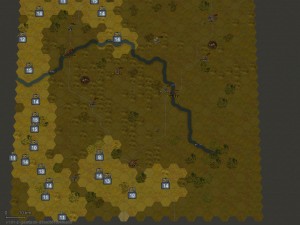

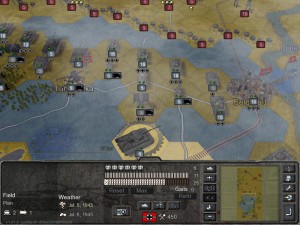
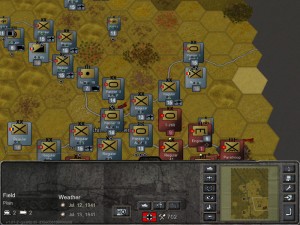
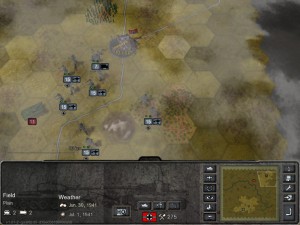
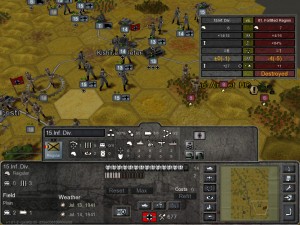
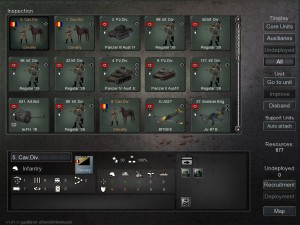
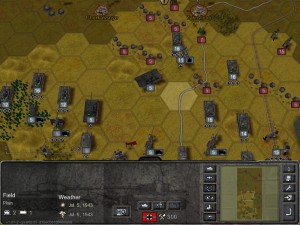


Nice review, Jim. 🙂
Great review, as always. The Michael Lyons book recommended, however, goes for $90 on Amazon!!!
I realy love the game’s menu theme: ‘Fight to the end’, and once tried copying it from the demo. That trick works, but at some point near the end, the song suddenly cuts to static for about 2 seconds before resuming(happens on the demo too) which ticks me off.
Getting to the point, I’m just wondering if anybody has a link or copy of the song by any chance that doesn’t include that awful scratch.